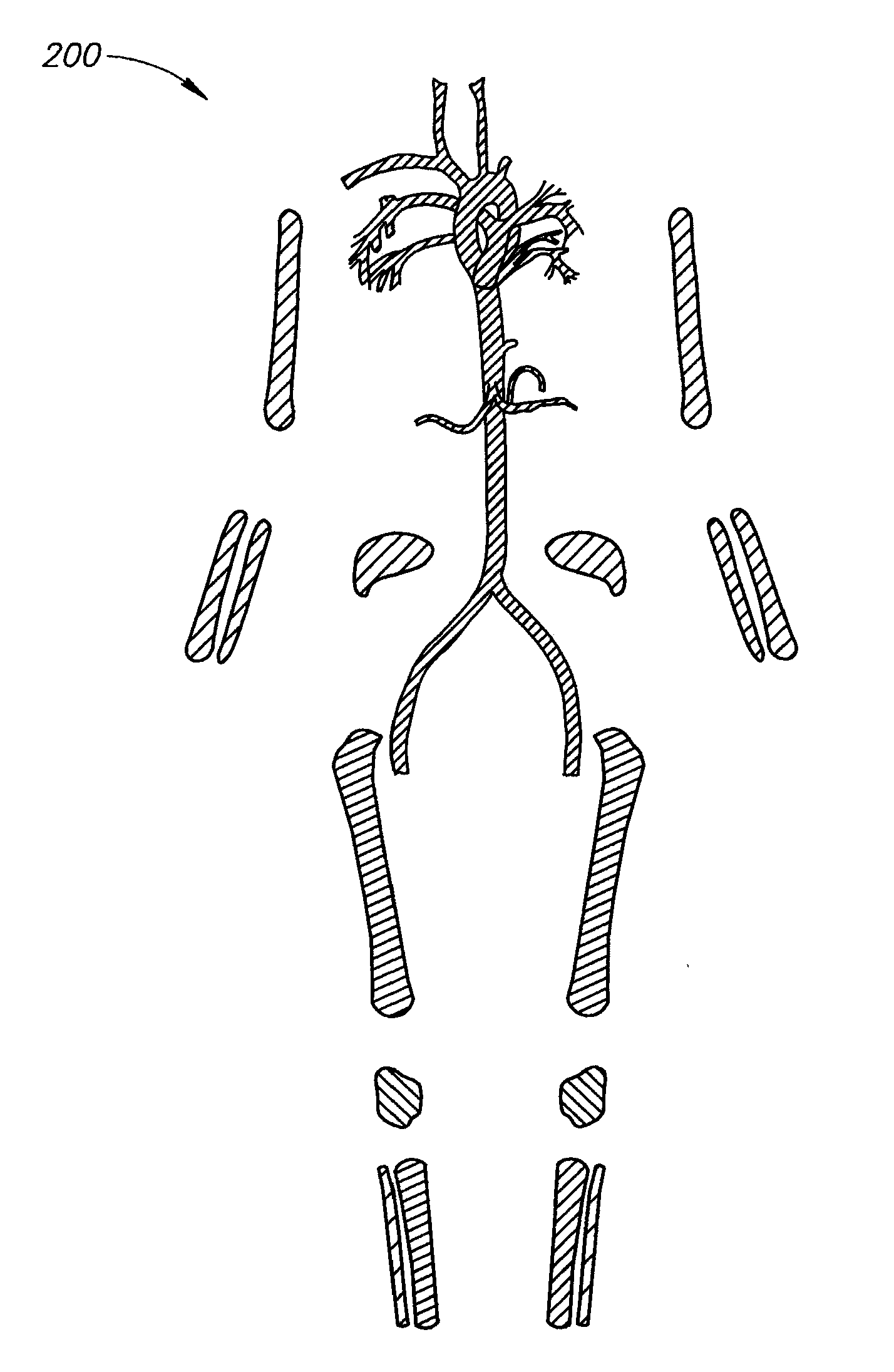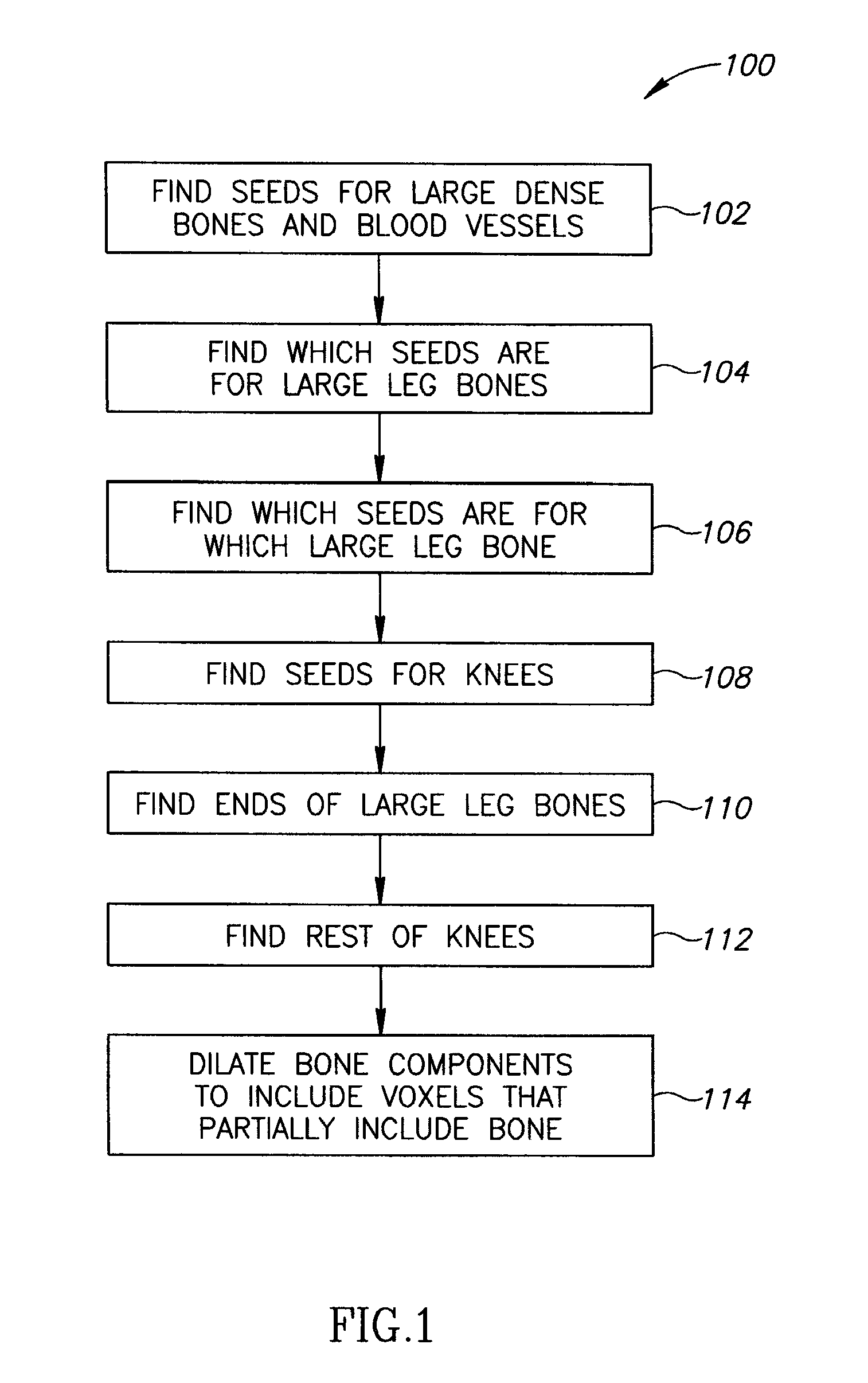Bone segmentation
a bone voxel and bone technology, applied in the field of bone segmentation, can solve the problems of time-consuming and laborious tasks, and it is not possible to distinguish bone voxels from blood vessel voxels with 100% accuracy
- Summary
- Abstract
- Description
- Claims
- Application Information
AI Technical Summary
Benefits of technology
Problems solved by technology
Method used
Image
Examples
Embodiment Construction
[0085]FIG. 1 shows a flowchart 100, providing an overview of a method optionally used to find leg bones, optionally before finding the rest of the bones in the body. The larger leg bones, the femur, tibia and fibula, are the longest bones in the body, and there are no very large blood vessels in the legs which could be mistaken for these bones, so in some embodiments of the invention it is advantageous to find the leg bones first, using a different method than that used to find the other bones.
[0086]The rest of this description gives further details of the method used to find the leg bones, and an overview and details of a method used to find the other bones, and to avoid mistaking blood vessels for bones, even though blood vessels with contrast agent and bones may have similar high image densities.
Find Seeds for the Large Leg Bones
[0087]At 102, seeds are found for the large leg bones, in an exemplary embodiment of the invention. The method of 102 is designed to find only a single s...
PUM
 Login to View More
Login to View More Abstract
Description
Claims
Application Information
 Login to View More
Login to View More - R&D
- Intellectual Property
- Life Sciences
- Materials
- Tech Scout
- Unparalleled Data Quality
- Higher Quality Content
- 60% Fewer Hallucinations
Browse by: Latest US Patents, China's latest patents, Technical Efficacy Thesaurus, Application Domain, Technology Topic, Popular Technical Reports.
© 2025 PatSnap. All rights reserved.Legal|Privacy policy|Modern Slavery Act Transparency Statement|Sitemap|About US| Contact US: help@patsnap.com



